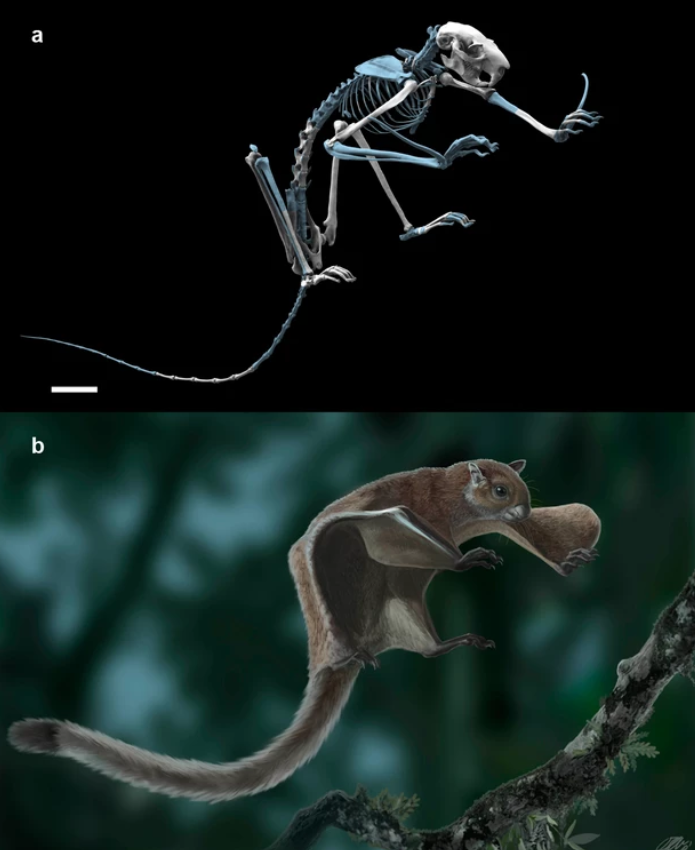Oldest skeleton of a fossil flying squirrel casts new light on the phylogeny of the group
Isaac Casanovas-Vilar, Joan Garcia-Porta, Josep Fortuny, Oscar Sanisidro, Jerome Prieto, Marina Querejeta, Sergio Llacer, Josep M Robles, Federico Bernardini, David M Alba - Institut Catala de Paleontologia Miquel Crusafont, Universitat Autonoma de Barcelona, Spain; Centre de Recerca Ecologica i Aplicacions Forestals, Universitat Autonoma de Barcelona, Spain; Centre de Recherches sur les Paleoenvironnements et la Paleobiodiversite, Museum national d’Histoire naturelle, Paris, France; Biodiversity Institute, University of Kansas, Lawrence, United States; Department fur Geo- und Umweltwissenschaften, Palaontologie, Ludwig-Maximilians-Universitat Munchen, Munich, Germany; Bayerische Staatssammlung fur Palaontologie und Geologie, Munich, Germany; Bavarian State Collection of Zoology, Munich, Germany; Centro Fermi, Museo Storico della Fisica e Centro Studi e Ricerche Enrico Fermi, Roma, Italy; Multidisciplinary Laboratory, The Abdus Salam International Centre for Theoretical Physics, Trieste, Italy
![Oldest skeleton of a fossil flying squirrel casts new light on the phylogeny of the group]()
Here we report the oldest fossil skeleton of a flying squirrel (11.6 Ma) that displays the gliding-related diagnostic features shared by extant forms and allows for a recalibration of the divergence time between tree and flying squirrels. Our phylogenetic analyses combining morphological and molecular data generally support older dates than previous molecular estimates (~23 Ma), being congruent with the inclusion of some of the earliest fossils (~36 Ma) into this clade. They also show that flying squirrels experienced little morphological change for almost 12 million years.
